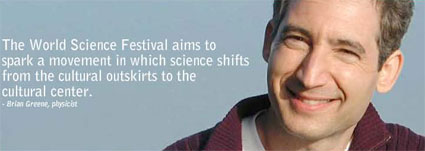CAN SCIENCE HELP SOLVE THE ECONOMIC CRISIS?
By Mike Brown, Stuart Kauffman, Zoe-Vonna Palmrose and Lee Smolin
The economic crisis has to be stabilized immediately. This has to be carried out pragmatically, without undue ideology, and without reliance on the failed ideas and assumptions which led to the crisis. Complexity science can help here. For example, it is wrong to speak of "restoring the markets to equilibrium", because the markets have never been in equilibrium. We are already way ahead if we speak of "restoring the markets to a stable, self-organized critical state."
In the near-term, Eric Weinstein has spoken about an "economic Manhattan project". This means getting a group of good scientists together, some who know a lot about economics and finance, and others, who have proved themselves in other areas of science but bring fresh minds and perspectives to the challenge, to focus on developing a scientific conceptualization of economic theory and modeling that is reliable enough to be called a science.
The Reality Club: Nassim Nicholas Taleb, Douglas Rushkoff, Larry Sanger, Mike Brown, George Dyson, Emanuel Derman, Michael Shermer, Paul Romer, Tor Nørretranders, Eric Weinstein, Brian Knutson
MIKE BROWN is Past Chairman of The Nasdaq Stock Market Board of Directors, past governor of the National Association of Securities Dealers, and past CFO of Microsoft Corporation, currently a director of EMC Corporation, VMware, Administaff Inc., Pipeline Financial Group Inc., and Thomas Weisel Partners.
Mike Brown's Edge Bio Page
STUART KAUFFMAN is Professor of biology, physics and astronomy and head of the Institute for Biocomplexity and Informatics, University of Calgary , also emeritus professor of biochemistry at the University of Pennsylvania, a MacArthur Fellow and an external professor at the Santa Fe Institute. Author of The Origins of Order, At Home in the Universe, Investigations and Reinventing the Sacred.
Stuart Kauffman's Edge Bio Page
ZOE-VONNA PALMROSE is PricewaterhouseCoopers Professor of Auditing and Accounting, University of Southern California. Formerly served as Deputy Chief Accountant for Professional Practice in the Office of the Chief Accountant at the Securities and Exchange Commission. Co-author, with Mike Brown, of Thog's Guide to Quantum Economics.
Zoe-Vonna Palmrose's Edge Bio Page
LEE SMOLIN is Founding and senior faculty, Perimeter Institute for Theoretical Physics. Author of Life of the Cosmos, Three Roads to Quantum Gravity and The Trouble with Physics.
Lee Smolin's Edge Bio Page












